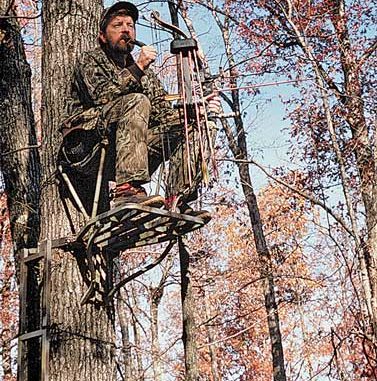
Hunters need good strategies to increase their chances of bagging that trophy of a lifetime during the rut.
When the rut kicks into high gear, hunters know its big buck time in North Carolina.
’Tis the season most hunters have a realistic opportunity to take a trophy deer. But even with bucks on the move with their guard ever-so-slightly-down, hunters have a number of specific strategies they can utilize to improve their odds of harvesting a wall-hanger.
Josh Airey splits a lot of his hunting time pursuing deer and wild hogs, but during this time of year, he’s locked into hunting trophy bucks.
“The peak of the rut is the most dynamic time in the deer woods, and there’s no place I’d rather be,” Airey said. “There are a lot of things to consider when hunting the rut to improve the odds of success.
“Without a doubt, some hunters will get lucky during this time of the year. They’ll get in a stand and by being patient some will be fortunate enough to have a doe lead a quality buck within range. But for consistent success, I believe you’ve got to have a well-planned method to your deer hunting madness.”
Airey said it’s best to first consider what’s happening in the deer woods during the rut. Deer patterns change dramatically from the early season hunting and from what will be occurring late in the season.
“Dominant bucks will of course be trailing doe deer, but they will also challenge other mature bucks and run off smaller males,” Airey said. “At this time of year the deer activity literally goes on around the clock.
“Also hunting feeding areas becomes less important as the bucks focus more on breeding than eating. You can find a doe feeding and have big buck walk up on her, but it’s not the food he’s after. Late in the season, food will again become an important part of my buck hunting strategy but not during this time of the year.
“Obviously, this is a great time to be in the woods all day long. That’s certainly one of the primary game plans I have. I get and stay comfortable and hunt a long time. Many times during mid-day when other hunters take a break or walk the woods to scout, the hunter that stays put will take that trophy buck. Sometimes I think the movement of other hunters may make deer move to my area where I’m just sitting tight.”
Another hunter with a serious game plan for rutting bucks is David Hale, of Knight and Hale Game Calls. Hale hunts around the country and loves to hunt the rut for a number of reasons.
“One of my favorite things about hunting the rut is there are so many different ways to hunt and be successful,” Hale said. “Depending on the specific terrain where you hunt, you can hunt from tree stands, ground blinds or stalk hunt if you’re on private land and don’t have to worry about other hunters being in the area. The rut allows great flexibility in the style you choose.
“Plus, it’s prime time for vocalization and rattling, which not only help pull in that trophy buck, but are great fun as well. The key is to plan your strategy based on the terrain you hunt and adapt it to take advantage of a buck’s preoccupation with mating.”
Hale said there are some obvious signs that some simple scouting will reveal as the place to set up during the rut.
“I like to hunt a stand that overlooks a diversity of terrain during the rut,” he said. “If there’s a draw or bottom near some thick cover that has fresh rubs, scrapes, recently used deer trails full of big tracks, it’s a good place to start.
“Sometimes I’ll hunt a place like this from the ground, backed up against a tree similar to turkey hunting or even in a ground blind. But getting up in a tree stand using a portable climber is often better because you can see more of the rutting area. Keep in mind to keep the height you climb the stand to the right level. Until all the leaves drop, if you get too high in a wooded environment, you can block off some of your vision.”
Hale is an awesome turkey hunter and uses his turkey hunting stalking ability in the deer woods too.
“Still hunting can be awesome during the rut,” he said. “I’ll use this period of high deer movement and breeding activity by those usually wary bucks to my advantage. You’ve still got to be ultra quiet and use the wind as your ally.
“But this can be a prime time to put a good stalk on a quality buck. That’s one of the more rewarding ways to take a trophy buck there is.
“I also love to rattle and grunt during the rut. A dominant buck is always on the lookout for a hot doe and will quickly investigate other deer that might invade his breeding domain.
“Buck grunts, doe bleats, and combinations of these vocalizations will work if the right buck hears it. Not all bucks will respond to calling.
“Over the years I’ve watched many bucks as I call to them. Often, they turn and come to me. Many times, they may look as if to merely honor hearing the call, but then continue moving the direction they were going.
“I figure they already had another plan. But when vocalization works, the results are awesome. And very importantly, I’ve never known a grunt or bleat, done properly, to spook a deer.
“My opinion is that vocalization can make the hunt but not break it. I rely on it heavily, especially when bow hunting and I need that buck to move just a few yards closer.
“Rattling is something I’ll do periodically during the day. Sometimes it’s best when deer activity seems to slow down, but it can be effective at any time of the day. As with grunts and bleats, you won’t call a deer in every time so don’t give up on the tactic when you see no results, just try again later.
Airey said another good game plan is to hunt where does are congregated.
“I’m in the woods a lot during the rut, as a hunter should be, and I see a lot of does,” he said. “If I’m not seeing enough bucks, then I’ll shift my focus to the areas where the does are staying. You can bet the bucks will be checking in and around those areas consistently.”
Airey said being able to read deer sign properly can help hunters determine the general movement pattern of bucks, which can be a big asset when selecting a stand site.
“It’s certainly a good idea to set up near fresh buck sign during the rut,” Airey said. “Rubs are a good example, although the peak of the rub making may be prior to the peak of the rut and activity on rub lines drops may off. The bucks usually don’t significantly change their normal travel route, they simply don’t do as much rubbing at that time.
“When you find a rub line, you can generally get a good idea of the direction the buck is traveling. If the rubs are all on one side of the trees through a specific area, odds are good the buck is coming from that direction. Plan your stand site to take advantage of that so you’ll have the wind to your advantage and good vision along that trail. This can be really important for bow hunters to get close to a quality buck.”
Airey also uses scrapes as part of his rut hunting system.
“Scrapes are important signs for the rut,” Airey said. “An increase in the numbers of scrapes is a sign the rut is underway.
“Bucks usually make scrapes where they’re easily found by does such as around feeding areas, heavily used trails, trail intersections and often along old woods roads. The buck will mark the scrape with its own scent.
“If I find a recently-activated scrape and know a big buck is using the area, it’s a prime place to set up. During the peak of the rut, bucks may not have to visit the scrapes as much since so many does are in estrus, but it’s certainly a good place to start.”
Big bucks can be taken any time of the season, but these expert hunters know the prime time to bag a trophy buck is right now, during the rut.
Using their tips and techniques and spending quality time — not quantity time — in the woods can increase your chances.

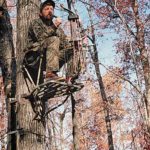
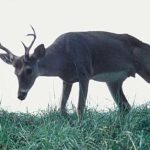
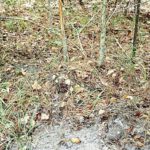
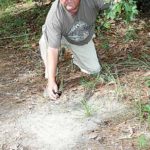
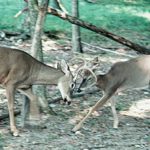



Be the first to comment